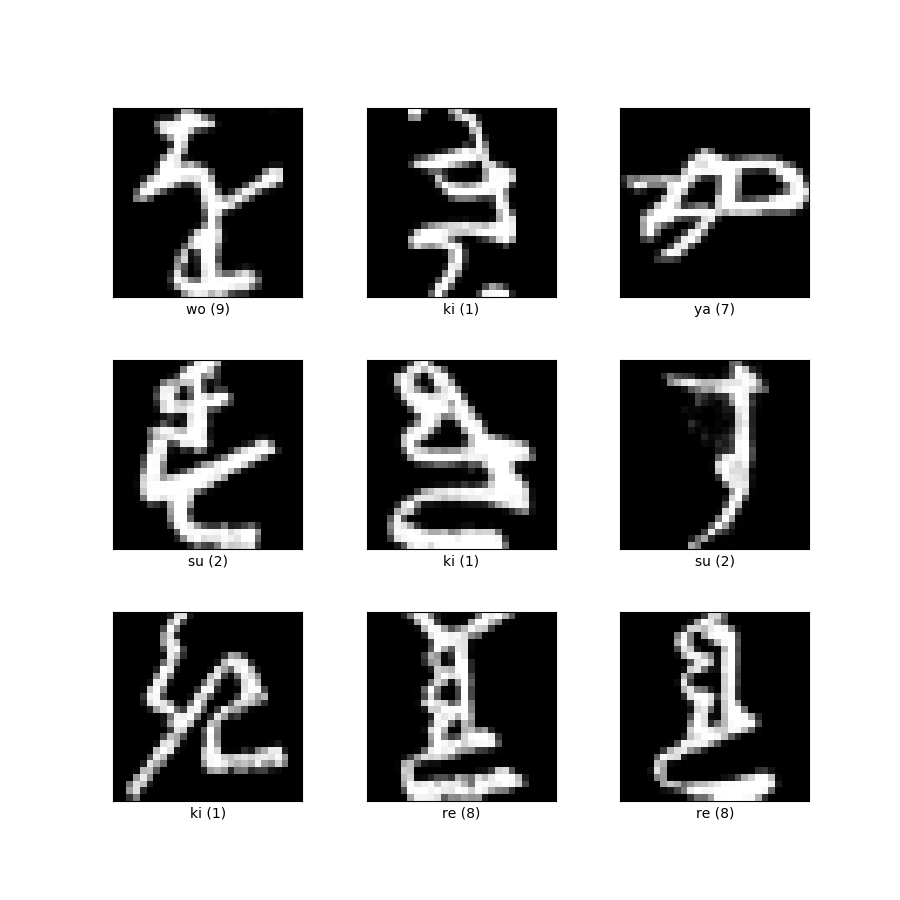- Description:
Kuzushiji-MNIST is a drop-in replacement for the MNIST dataset (28x28 grayscale, 70,000 images), provided in the original MNIST format as well as a NumPy format. Since MNIST restricts us to 10 classes, we chose one character to represent each of the 10 rows of Hiragana when creating Kuzushiji-MNIST.
Additional Documentation: Explore on Papers With Code
Source code:
tfds.image_classification.KMNISTVersions:
3.0.1(default): No release notes.
Download size:
20.26 MiBDataset size:
31.76 MiBAuto-cached (documentation): Yes
Splits:
| Split | Examples |
|---|---|
'test' |
10,000 |
'train' |
60,000 |
- Feature structure:
FeaturesDict({
'image': Image(shape=(28, 28, 1), dtype=uint8),
'label': ClassLabel(shape=(), dtype=int64, num_classes=10),
})
- Feature documentation:
| Feature | Class | Shape | Dtype | Description |
|---|---|---|---|---|
| FeaturesDict | ||||
| image | Image | (28, 28, 1) | uint8 | |
| label | ClassLabel | int64 |
Supervised keys (See
as_superviseddoc):('image', 'label')Figure (tfds.show_examples):

- Examples (tfds.as_dataframe):
- Citation:
@online{clanuwat2018deep,
author = {Tarin Clanuwat and Mikel Bober-Irizar and Asanobu Kitamoto and Alex Lamb and Kazuaki Yamamoto and David Ha},
title = {Deep Learning for Classical Japanese Literature},
date = {2018-12-03},
year = {2018},
eprintclass = {cs.CV},
eprinttype = {arXiv},
eprint = {cs.CV/1812.01718},
}
